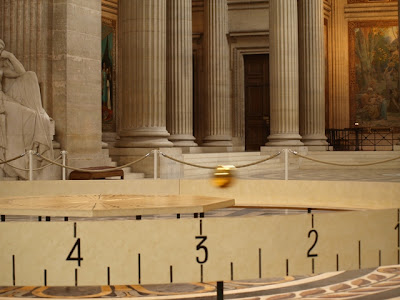Bougainvillean variations
I could find only one link to botany in the collection of scientific souls competing for attention beneath the Pantheon in Paris. The French respect their intellectuals of course, and our subject shares the giant basement under Foucault's oscillating pendulum with the likes of Messrs Voltaire, Hugo and Curie.
As for Louis Antoine himself, I don't know that he had any great love of plants, but I stand to be corrected (you know where the 'comment' button is!). However I can give you one, slightly tenuous, link between the Bougainville family and botany. Louis Antoine's son, Baron Hyacinthe, visited Sydney's Botanic Garden in 1825 and for the full tale of romance and intrigue by Pamela Mawbey take a look at the Royal Botanic Gardens and Domain Trust, Sydney website.
It's a beautiful garden, with most plants named and labelled, sometimes with a bit extra about their economic use or value. But because
the plants are not wild sourced and the record keeping poor in comparison to the Botanical Garden, and the research (agricultural and essential oils) limited
in scope and quantity, my Chinese colleagues refereed to it as ‘only a Bougainvillea
garden’. Could be worse!



Comments
https://www.quester.pk/question/how-long-can-a-person-live-without-water-and-food/
https://www.quester.pk/question/which-is-the-strongest-bone-in-human-body/
https://www.quester.pk/question/can-we-commit-suicide-by-holding-breath/
https://www.quester.pk/question/which-animal-has-bigger-eyes-than-brain/